Le scuole per l’infanzia di fronte alla sfida della crisi pandemica. Verso un sistema educativo “esteso”
Tra le molte attività sconvolte dall’attuale crisi pandemica la scuola è stata una delle più duramente penalizzate. Dagli spazi distributivi e accessori fino al nucleo stesso dell’aula, l’intero edificio scolastico è ora messo in crisi da protocolli che, seppur temporaneamente, impongono di sovvertirne la natura stessa. Nei mesi di aprile/giugno 2020 il Dipartimento Architettura e Design del Politecnico di Torino ha contribuito alla redazione del documento “Scuole Aperte. Società Protetta” con un approfondimento sui servizi educativi prescolari. Lo studio prodotto ambisce a quantificare e spazializzare l’entità del problema relativo al rientro dei bambini a scuola e fornisce alcuni scenari operativi per la riorganizzazione degli spazi didattici.
L’indagine, che ha un carattere prototipale, ha formulato alcune azioni di verifica e d’intervento. La fotografia eseguita su questo segmento scolastico evidenzia disomogeneità sorprendenti e si pone come un primo passo per una riflessione più ampia sull’innovazione delle strutture scolastiche.
Preschools and the pandemic crisis. Towards an “extended” educational system
Among the wide range of activities that have been compromised by the current pandemic outbreak, the Italian school system is by far one of the most severly damaged. A new set of rules and regulations, spanning the whole school building from the distribution and service spaces to the classrooms, is now upsetting its very conception with an overturning of its traditional purposes, aimed to separate people, although temporarily. During April-June 2020 the Department of Architecture and Design of the Politecnico di Torino contributed to the drafting of the document Scuole Aperte. Società Protetta (Open Schools. Safe Society) with a study focusing on the educational facilities of the pre-school cycle. The study was aimed to quantify and spatialize the physical implications of the new distancing rules, in order to define some alternative scenarios for the reorganization of the school spaces in view of the students’ comeback. The investigation started with some prototypical case studies, whose results were used to arrange a set of intervention strategies. The limited survey that has been carried out about this educational cycle shows unexpected imbalances and it stands as a first step for a broader reflection about innovation in school facilities.

Quest'opera è distribuita con Licenza Creative Commons Attribuzione - Non commerciale - Condividi allo stesso modo 3.0 Italia.









